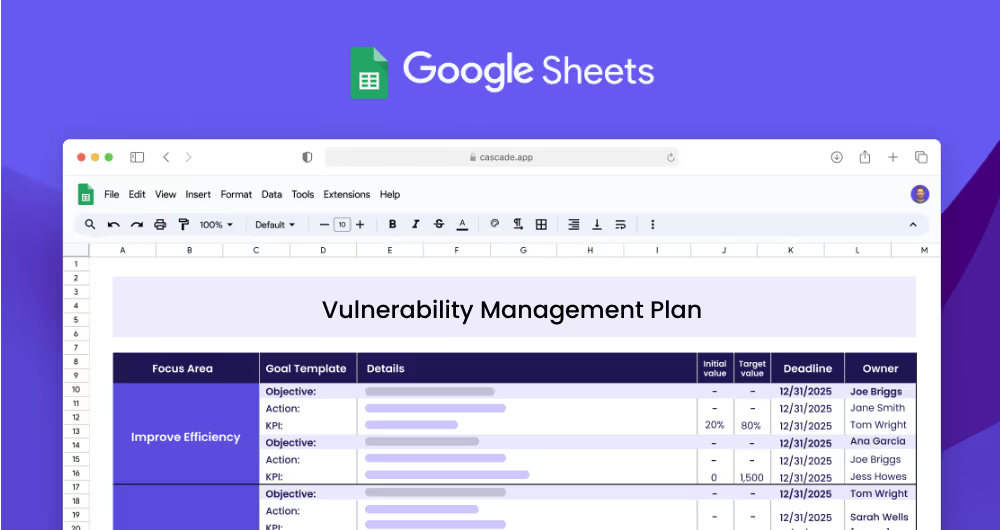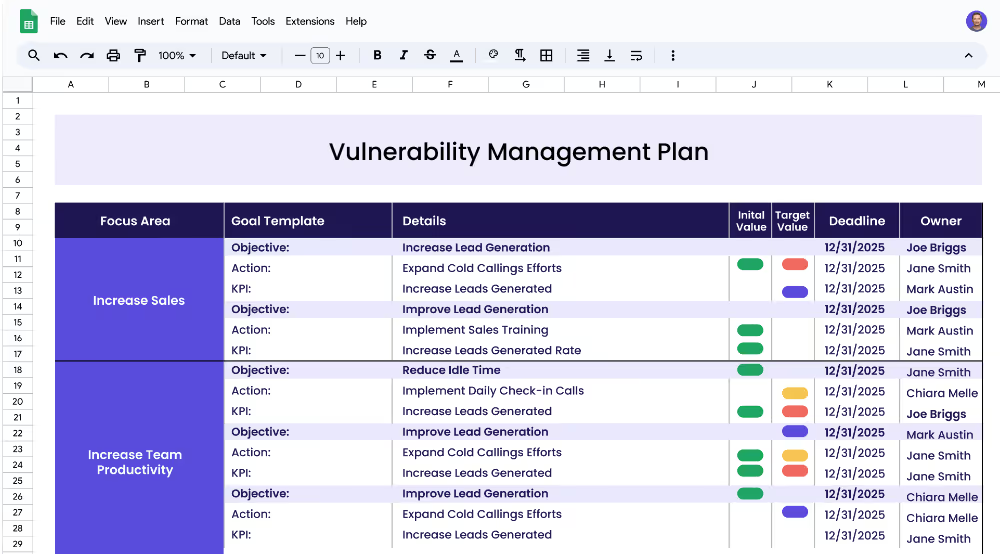A Vulnerability Management Plan outlines a strategic framework for managing and mitigating vulnerabilities within an organization’s systems and infrastructure. It is designed to identify and address security risks, vulnerabilities, threats, and other potential issues that could result in data breaches, system outages, or other security incidents. The plan should be regularly updated and reviewed to ensure that it is in line with the organization’s security objectives and is up to date with the latest threats and vulnerabilities.
Each focus area has its own objectives, projects, and KPIs to ensure that the strategy is comprehensive and effective.
This Vulnerability Management Plan template is designed for IT leaders and teams who are looking to create a plan to manage and mitigate vulnerabilities in their systems. The template provides a structure and guidance to help create a comprehensive plan that can be used to identify and track potential vulnerabilities, implement security patches, and monitor user access and endpoint activity.
Focus areas are the topics or areas of security that will be addressed in the Vulnerability Management Plan. Examples of focus areas include Vulnerability Management, Endpoint Security, User Access Controls, and Network Security. Each focus area should have specific objectives, measurable targets (KPIs), and related projects that will help achieve those targets.
Objectives are the goals or outcomes that must be achieved in order to successfully address the focus area. Objectives should be specific, measurable, achievable, relevant, and time-bound (SMART). For example, under the focus area of Vulnerability Management, objectives could include identifying and monitoring vulnerabilities and mitigating vulnerabilities.
KPIs (key performance indicators) are measurable targets that can be used to track progress towards an objective. For example, under the objective of mitigating vulnerabilities, a KPI could be reducing the number of vulnerabilities. KPIs should be measurable, achievable, and relevant to the objective.
Projects (also known as actions) are the steps that must be taken in order to achieve the KPIs. For example, under the objective of mitigating vulnerabilities, a project could be to implement security patches. Projects should be specific, measurable, achievable, relevant, and time-bound (SMART).
If you’re ready to accelerate your strategy and see faster results, consider using Cascade Strategy Execution Software. Unlike spreadsheets, Cascade provides a streamlined platform designed to help you create, track, and execute your strategy with ease. Sign-up for free or book a demo with one of our strategy experts to get started today!


